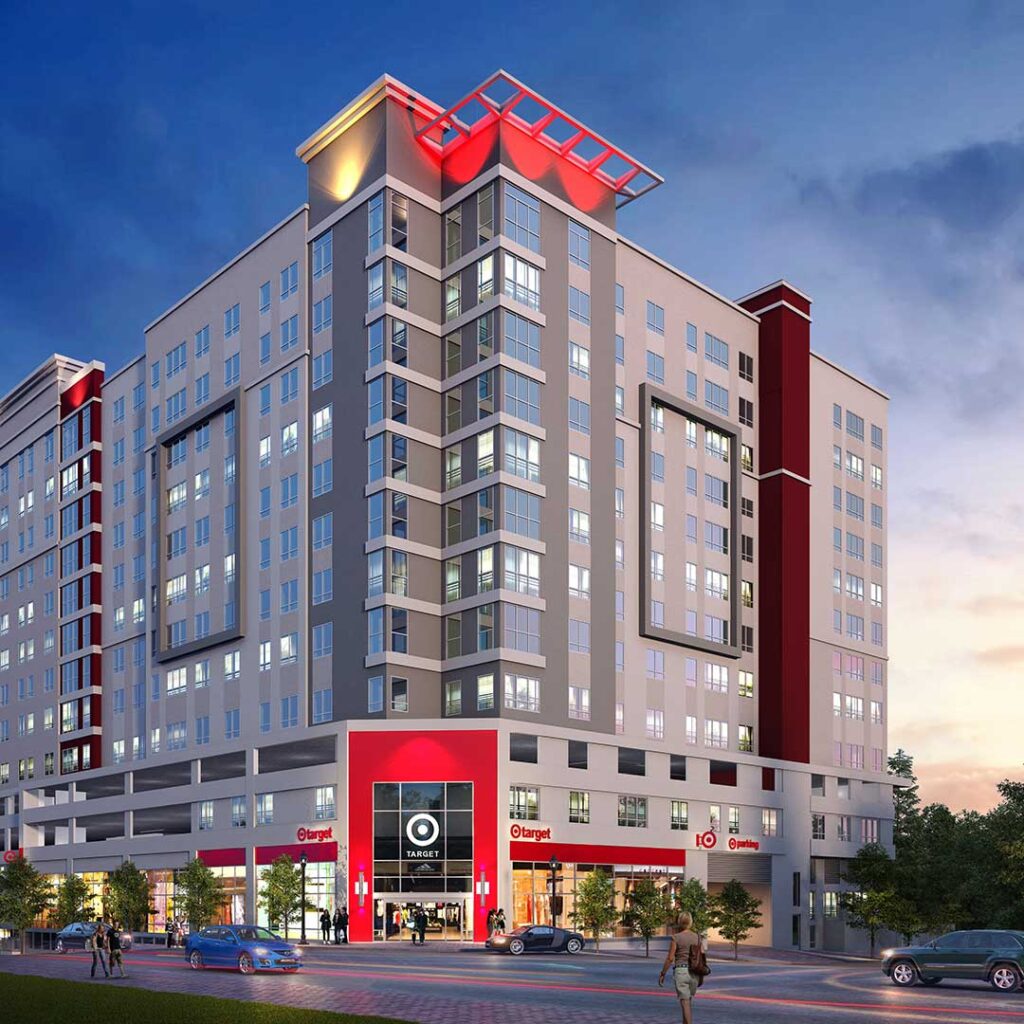Throughout history, towns and cities have often been developed around central arteries, such as Main Street, with commercial premises on the ground floor and residential quarters above. It was not until the introduction of zoning laws that municipalities started to enforce specific guidelines on the construction locations and designated uses of buildings. However, in recent decades, younger generations have begun to rediscover the advantages of urban living in vibrant city centers like Austin or San Antonio. This resurgence has led to a renewed interest in the development of Mixed-Use Buildings. In this article, we will explore the concept of mixed-use buildings and the various types of mixed-use developments that are emerging in urban areas nationwide.
What does Mixed-Use Development mean?

The term “mixed-use development” has multiple meanings and can be applied to a wide range of community real estate development projects. At the most basic of definitions, real estate developments may be classified as “mixed-use” if they provide more than one use or purpose within a shared building or development area. Mixed-used projects may include any combination of the following: housing, office, retail, medical, recreational, commercial, or industrial spaces.
Mixed-use real estate development projects in Texas can vary in scale from a single building occupied by a retail shop on the ground floor with an upstairs apartment to a comprehensive “urban village” development with multiple buildings containing separate but compatible uses such as a retail center, office building, and medical clinic located adjacent to a multi-family housing complex. Many of these urban village developments are often considered to be sustainable communities.
Types of Multi-Use Developments
Mixed-use developments can come in a variety of shapes, sizes, and scales. According to the Urban Land Institute’s Mixed-Use Development Handbook, a mixed-use development must provide three or more significant revenue-producing uses (such as retail, entertainment, office, residential, hotel, or recreation), foster community integration, and create a walkable community with uninterrupted pedestrian connections. With those requirements in mind and multi-use zoning laws, this allows for mixed-use developments to take shape in a variety of forms, such as vertical or horizontal mixed-use developments. Here’s a list of some of the most common mixed-use real estate development plans.
Main Street
The Main Street model of mixed-use developments is arguably the oldest model of mixed-use property types. This model has survived the urban decline only to return and energize urban communities in towns and cities across Texas. While smaller towns still boast locally own businesses on the ground floor, larger metro areas are seeing services, hospitality, and entertainment venues fill the ground floors. What remains true about the Main Street mixed-use development model is that apartments or condos are still above these commercial spaces.
Shopping Mall/Department Store Conversion
With the rise of e-commerce, and giant online retailers like Amazon and Etsy, many brick-and-mortar retail businesses had to close up shop as they could no longer compete with the convenience afforded by ecommerce websites. Vacated shopping malls and large department stores have quickly found a new purpose by mixed-use real estate developers in Texas. These valuable pieces of real estate are now being used for residential units and businesses that are better suited to compete against ecommerce giants.
Vertical Mixed-Use Developments
Falling into a broader category of mixed-use developments, a vertical mixed-use building may house any combination of businesses. Typically, however, public uses such as restaurants, coffee shops, government offices, and even transit facilities congregate on the lower floors, while private uses the likes of condo units or hotel rooms are located higher up. This type of mixed-use development is common in cities like San Antonio and Austin downtown areas.
Horizontal Mixed-Use Developments
Horizontal mixed-use developments combine various single-use buildings into a single, cohesive, mixed-use lot. These type of multi-use real estate developments allow for the combination of businesses and residential units to evolve into a walkable community or even into a neighborhood. In urban areas around Texas, such as San Antonio or New Braunfels, horizontal mixed-use developments often repurpose abandoned buildings in what were formally industrial buildings. By repurposing former industrial buildings, these mixed-use developers make for popular places for condos, a myriad of shops, restaurants, banks, rec centers, and workspace offices.
Casey Development, Ltd: Multi-Use Real Estate Developers in San Antonio, Austin, and San Marcos
Casey Development, Ltd. is the experience mixed-use building developer investors rely on in Central Texas. We’ve helped develop mixed-use buildings in San Antonio, Austin, San Marcos, New Braunfels, and more. Contact our team of mixed-use building developers today to get started on your project today.
